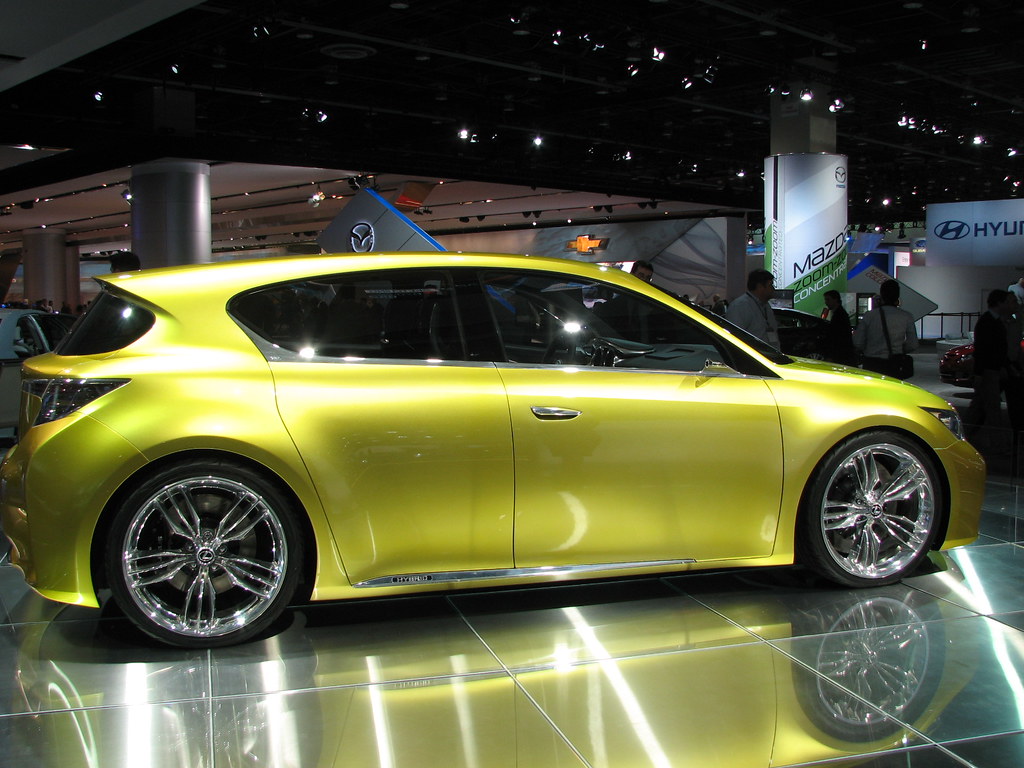
Let’s face it, fellow car enthusiasts, sometimes our dream rides turn into absolute nightmares. We’ve all been there, mesmerized by a shiny new (or new-to-us) model, drawn in by the marketing hype, only to find ourselves deep in the throes of buyer’s remorse. Spending tens of thousands of dollars, or committing to a multi-year loan, on a vehicle that consistently lets you down? That’s a special kind of gut punch, and unfortunately, it happens far too often in the wild world of automobiles.
Considering how steep the prices for both new and used cars are these days, knowledge is your most powerful weapon. Making a purchase decision based solely on dazzling exterior aesthetics or a slick spec sheet is a surefire way to invite trouble. Nobody wants to be stuck with a lemon, and nobody wants to be constantly shelling out for repairs or dealing with a ride that just doesn’t deliver on its promises. Learning from the costly mistakes of other vehicle owners is, hands down, one of the smartest ways to navigate the treacherous waters of car buying.
So, buckle up, because we’re about to take a deep dive into some serious automotive letdowns. We’ve sifted through countless tales of woe and mechanical mishaps to bring you a candid look at 10 performance models that drivers, given the chance, would happily hit the “undo” button on. From underperforming engines to sky-high maintenance costs, and from disappointing fuel efficiency to rapid depreciation rates, these are the cars that might look appealing but are, frankly, best avoided unless you enjoy migraines on wheels. Let’s get into the nitty-gritty of why these vehicles often turn from dream rides into driving disappointments.
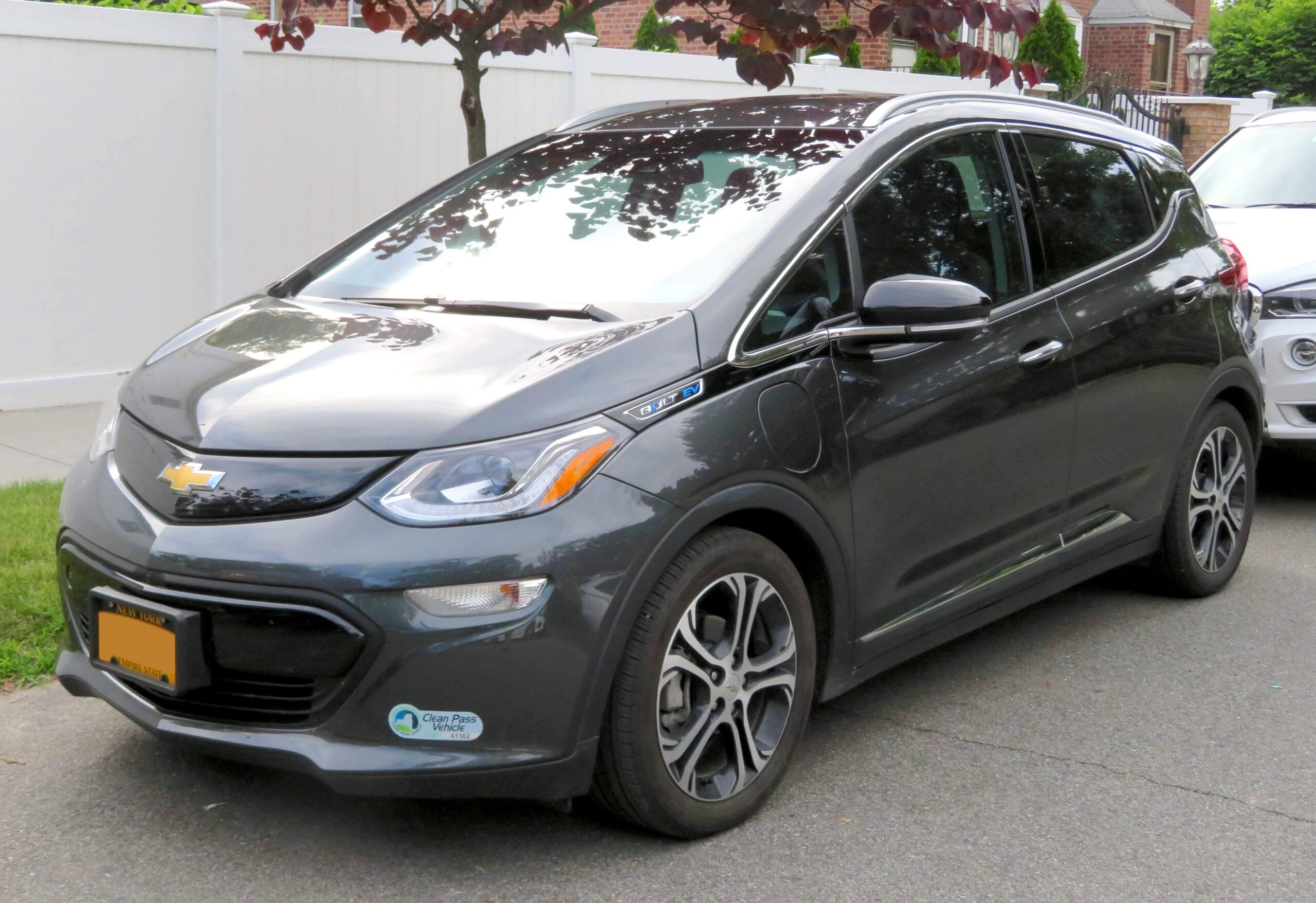
1. **Chevrolet Bolt**Ah, the Chevrolet Bolt. On the surface, it seems like a win for affordable electric vehicles, earning some initial praise for its approachable price point and respectable range. However, this promising EV has been notoriously plagued with problems that extend far beyond a simple glitch. We’re talking about issues so significant they led to widespread anxiety and a serious hit to GM’s reputation in the burgeoning EV market.
Its most infamous and undeniably terrifying issue stems from battery-related fires, which triggered massive recalls in both 2020 and 2021. The root of this fiery problem was traced back to lithium-ion batteries supplied by LG, which had a nasty habit of short-circuiting, overheating, and then, quite literally, igniting into flames. Imagine that dread hanging over you every time you charge your car – not exactly the stress-free ownership experience an EV is supposed to offer.
Beyond the headline-grabbing battery issues, the Bolt struggles in other fundamental areas that are crucial for daily driving satisfaction. Owners frequently describe the ride quality as merely “so-so,” lacking the refinement and comfort one might expect from a modern vehicle. Furthermore, the space allocated for rear passengers is often found wanting, making it less practical for families or those who frequently ferry friends. Even the handling, a critical component of any driving experience, is often categorized as uninspired, falling short of what’s needed to make city commutes or highway stretches genuinely engaging. These cumulative shortcomings pulled the Bolt from Consumer Reports’ recommendation list, a clear sign that Chevrolet, despite its efforts, still had much to prove in the fiercely competitive EV segment.
Car Model Information: 2023 Chevrolet Bolt EUV FWD Premier
Name: Chevrolet Bolt EV
Caption: 2022 Chevrolet Bolt EV
Manufacturer: General Motors
Production: 2016–2023
ModelYears: 2017–2023
Class: Subcompact car
BodyStyle: hatchback
Layout: Front-engine, front-wheel-drive layout
Predecessor: Chevrolet Spark EV
Categories: 2020s cars, All Wikipedia articles in need of updating, All articles containing potentially dated statements, All articles to be merged, All articles with unsourced statements
Summary: The Chevrolet Bolt EV (marketed in Europe as Opel Ampera-e) is a battery electric subcompact hatchback manufactured and marketed by General Motors under its Chevrolet brand from late 2016 until late 2023, with a brief hiatus between mid-2021 and early 2022.
The first-generation Bolt was developed and manufactured with LG Corporation. Sales of the 2017 Bolt began in California in December 2016; it was released nationwide and international markets release in 2017. A rebadged European variant was marketed as the Opel Ampera-e in mainland Europe. In 2017, the Bolt was the second-best-selling plug-in car in the United States. It was named the 2017 Motor Trend Car of the Year, the 2017 North American Car of the Year, an Automobile magazine 2017 All Star, and was listed in Time magazine’s Best 25 Inventions of 2016. The Ampera-e was discontinued after 2018. By the end of 2020, GM had sold 112,000 Bolt and Ampera-e cars worldwide. The first-generation Bolt had been subject to at least three recalls due to battery fire risks.
In mid-2023, GM officials said they would discontinue the Bolt; after outcry, they announced plans for a next-generation model. The second-generation Bolt, based on the Chevrolet Bolt EUV, was unveiled on October 9, 2025 and will go on sale in 2026 as a 2027 model.
Get more information about: Chevrolet Bolt
Buying a high-performing used car >>>
Brand: Chevrolet Model: Bolt
Price: $23,591 Mileage: 23,569 mi.
Read more about: Inside Vanilla Ice’s Garage: A Deep Dive into the Rapper’s Eclectic and Multi-Million Dollar Automotive Collection
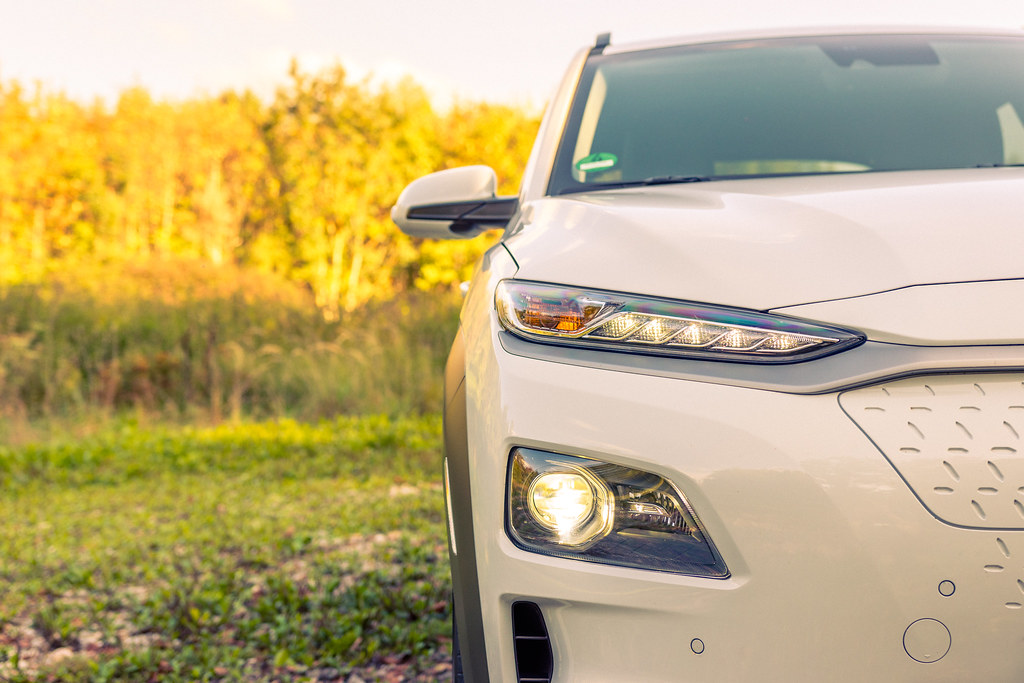
2. **Hyundai Kona Electric**Hydunai has, without a doubt, been making some serious waves in the electric vehicle arena lately, rolling out a number of intriguing and well-received EVs that have garnered positive attention. But even the best carmakers can hit a speed bump, and for Hyundai, the Kona Electric has unfortunately become Exhibit A in the case of “clunkers.” It’s another example of an EV that promised much but delivered a hefty dose of unwelcome surprises, leaving many early adopters with a bitter taste of regret.
Much like its Chevrolet counterpart, the Hyundai Kona Electric has a rather unfortunate history tainted by battery fires and subsequent recalls. The carmaker was compelled to issue a worldwide recall in both 2020 and 2021, a desperate measure to extinguish the fire risks by replacing battery packs in the affected vehicles. This kind of systemic issue doesn’t just impact a car’s reliability; it utterly shatters consumer confidence and can make even the most dedicated EV proponent question their purchase.
However, the battery issues, as catastrophic as they were, proved to be just the tip of the iceberg for this particular Hyundai. Many owners soon discovered that the car had a host of other lurking problems, contributing to an overall underwhelming ownership experience. When you’re buying a cutting-edge electric vehicle, you expect innovation, not an endless list of repairs and compromises. The continuous stream of mechanical and electrical quirks meant that the Kona Electric, despite its initial appeal, frequently failed to live up to the promise of hassle-free, efficient electric motoring. For potential buyers, the message is stark: buyer beware, because what you see isn’t always what you get.
Car Model Information: 2024 Toyota Camry SE
Name: Hyundai Kona
Caption: Hyundai Kona N Line (SX2)
Manufacturer: Hyundai Motor Company
Aka: Hyundai Kauai (Portugal)
Production: 2017–present
ModelYears: 2018–present
Class: Subcompact crossover SUV
BodyStyle: SUV
Layout: ubl
Categories: 2020s cars, All-wheel-drive vehicles, All Wikipedia articles in need of updating, All Wikipedia articles written in British English, Articles containing Chinese-language text
Summary: The Hyundai Kona (Korean: 현대 코나) is a subcompact crossover SUV produced by the South Korean manufacturer Hyundai. The first-generation Kona debuted in June 2017 and the production version was revealed later that year. It is positioned between the Venue or Bayon and the Tucson in Hyundai crossover SUV line-up. The battery electric version called the Kona Electric (or Kona EV) was first launched in South Korea during the first half of 2018 and rolled out gradually worldwide afterwards.
Get more information about: Hyundai Kona
Buying a high-performing used car >>>
Brand: Hyundai Model: Kona Electric
Price: $23,188 Mileage: 64,336 mi.
Read more about: Buyer’s Remorse on Full Display: 15 Vehicles Motorists Swear They’d ‘Unchoose’ if They Could, According to Driver Confessions
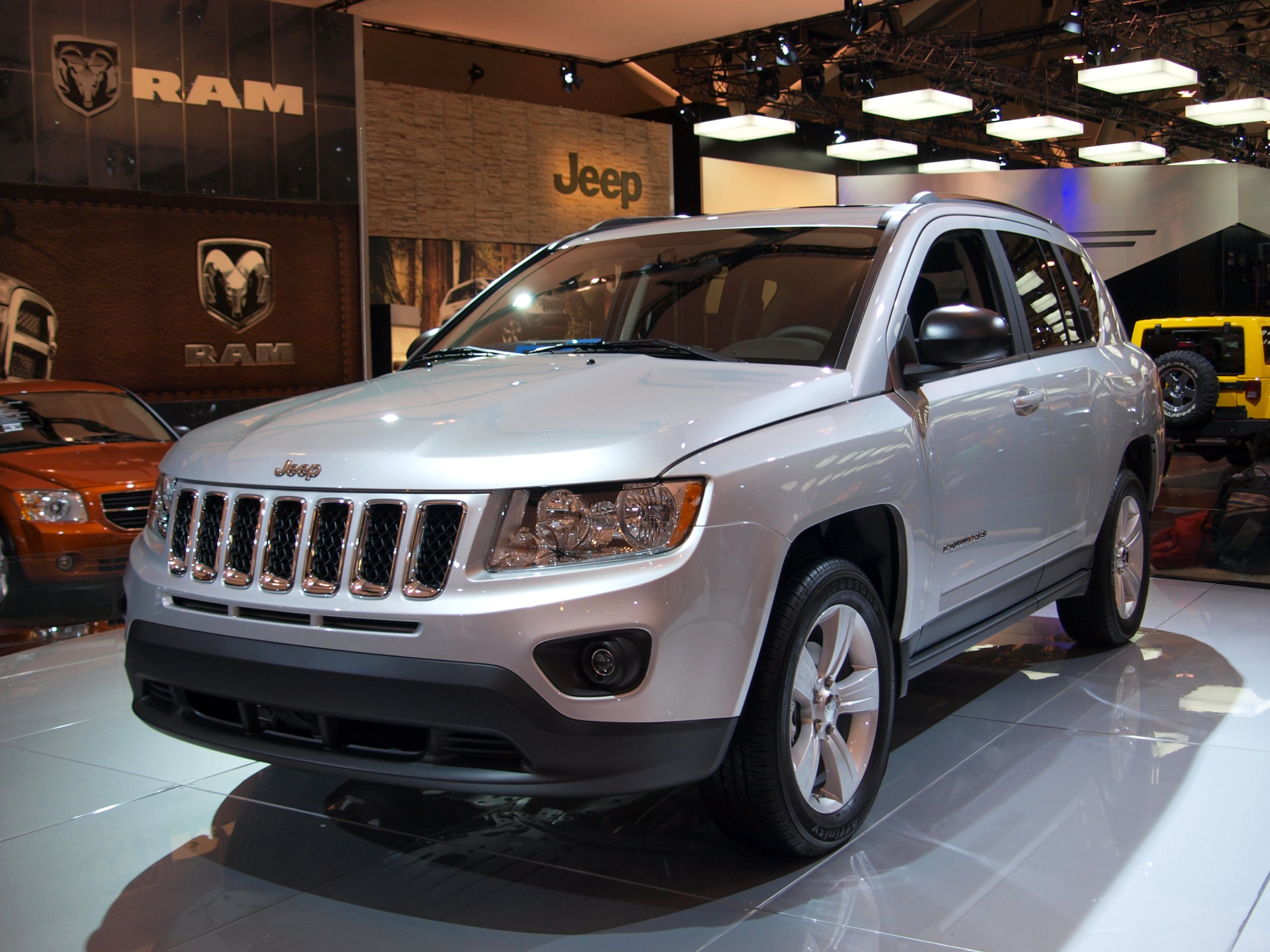
3. **Jeep Compass**The Jeep Compass, a compact SUV aiming to capture a slice of the adventurous spirit associated with the Jeep brand, has, across various model years, proven to be a source of significant vexation for its owners. If you’re in the market for a vehicle that won’t give you a constant migraine headache on wheels, then taking a wide berth around this particular SUV is probably your wisest move. It’s a classic case of an off-road aesthetic meeting on-road frustration.
One of the most frequently cited and utterly exasperating issues that owners complain about involves the transmission. Whether it’s the continuously variable transmission (CVT) or the 9-speed automatic, drivers have reported a litany of problems ranging from unpleasantly “herky-jerky” shifting to outright catastrophic failure. Imagine being on the highway, or navigating a tricky trail, and your transmission decides to throw a fit or, worse, completely give up the ghost. It’s not just an inconvenience; it’s a serious safety concern and a massive drain on your wallet.
But the transmission woes are far from the only grievances in the Compass’s checkered history. Owners also report poor engine performance, which translates to a lack of power and responsiveness when you need it most. Excessive oil consumption is another recurring nightmare, forcing owners to constantly monitor and top off their oil levels, an annoying and potentially damaging chore. To round out the list of disappointments, electrical system issues frequently rear their ugly heads, manifesting in unpredictable glitches and malfunctions that can be notoriously difficult and expensive to diagnose and repair. These systemic problems make the Jeep Compass a prime candidate for the “undo” list for many who’ve owned it.
Car Model Information: 2024 Jeep Compass Latitude
Name: Jeep Compass
Caption: 2019 Jeep Compass
Manufacturer: Jeep
Production: 2006–present
ModelYears: 2007–present
Class: Compact crossover SUV
BodyStyle: SUV
Layout: Front-engine, front-wheel-drive layout
Chassis: Unibody
Categories: 2010s cars, 2020s cars, All-wheel-drive vehicles, All Wikipedia articles written in American English, Articles with short description
Summary: The Jeep Compass is a compact crossover SUV, introduced in 2006 for the 2007 model year. The first generation Compass and Patriot, its rebadged variant, were among Jeep’s first crossover SUVs. The second-generation Compass debuted in September 2016 in Brazil and at the Los Angeles International Auto Show in November 2016, sharing a modified platform with the Renegade. It is positioned between the smaller Renegade and the larger Cherokee globally or the Commander in South America. The third-generation Compass debuted in May 2025, built on the STLA Medium by Stellantis, shared with other PSA Groupe vehicles.
Get more information about: Jeep Compass
Buying a high-performing used car >>>
Brand: Jeep Model: Compass
Price: $17,669 Mileage: 53,969 mi.
Read more about: Buyer’s Remorse on Full Display: 15 Vehicles Motorists Swear They’d ‘Unchoose’ if They Could, According to Driver Confessions
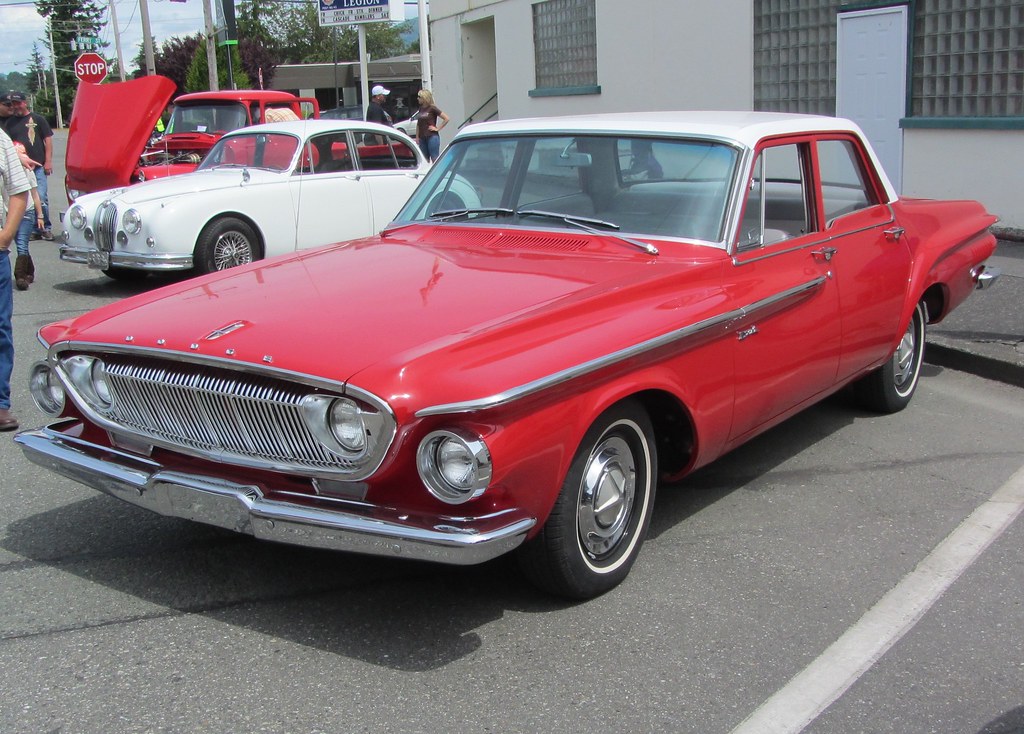
4. **Dodge Dart**When the Dodge Dart made its return, it was meant to be a compact sedan for the modern age, a valiant effort to bring a respected nameplate back to relevance. However, what buyers often got instead was a compact sedan saddled with problems typically associated with much larger, more complex—and perhaps older—vehicles. It quickly became apparent that the Dart was a car many owners wished they could erase from their purchasing history, a decision often made with deep regret.
Where does one even begin with the litany of issues that plagued the Dodge Dart? It feels like nearly every major component was a potential source of trouble. From the very core of its mechanical existence – the transmission and the engine – to the crucial elements that impact ride comfort and safety – the suspension and the brakes – owners reported a widespread breakdown in expected functionality. This wasn’t a car with one Achilles’ heel; it seemed to have several, each contributing to a disheartening ownership experience.
Indeed, the level of dissatisfaction among Dart owners was strikingly high. According to insights from Consumer Reports, a staggering six out of ten buyers expressed that they were simply not satisfied with their vehicle. That’s not just a few disgruntled customers; that’s a clear majority who felt shortchanged and let down. This kind of widespread disapproval points to fundamental flaws in design, engineering, or manufacturing that made the Dart a consistent source of frustration rather than reliable transportation. It’s a prime example of a vehicle that promised a return to form but delivered little more than headaches and regrets.
Car Model Information: 2015 Dodge Dart SXT
Name: Dodge Dart
Caption: 1966 Dodge Dart GT 2-door hardtop
Manufacturer: Dodge
Production: 1959–1976 (US market)
ModelYears: 1960–1976 (US market)
Class: Full-size
Layout: FR layout
Predecessor: Dodge Coronet#Fourth generation (1957–1959)
Related: Plymouth Valiant,Chrysler Valiant,Dodge Phoenix
Successor: Dodge Aspen,Dodge Diplomat,Talbot Tagora
Categories: 1970s cars, All articles with unsourced statements, Articles with short description, Articles with unsourced statements from December 2023, Articles with unsourced statements from May 2025
Summary: The Dodge Dart is a line of passenger cars produced by Dodge from the 1959 to 1976 model years in North America, with production extended to later years in various other markets.
The production Dodge Dart was introduced as a lower-priced full-size model in 1960 and 1961, but became a mid-size car for one model year for 1962, and was then reduced to a compact for two generations, from 1963 to 1976.
Chrysler had first used ‘Dart’ name plates on two Italian styled show cars, in 1956 and 1957, before it became a Dodge model name. The Dart nameplate was resurrected for a Fiat-derived compact car that was introduced in 2012.
Get more information about: Dodge Dart
Buying a high-performing used car >>>
Brand: Dodge Model: Dart
Price: $9,995 Mileage: 143,082 mi.
Read more about: Buyer’s Remorse on Full Display: 15 Vehicles Motorists Swear They’d ‘Unchoose’ if They Could, According to Driver Confessions
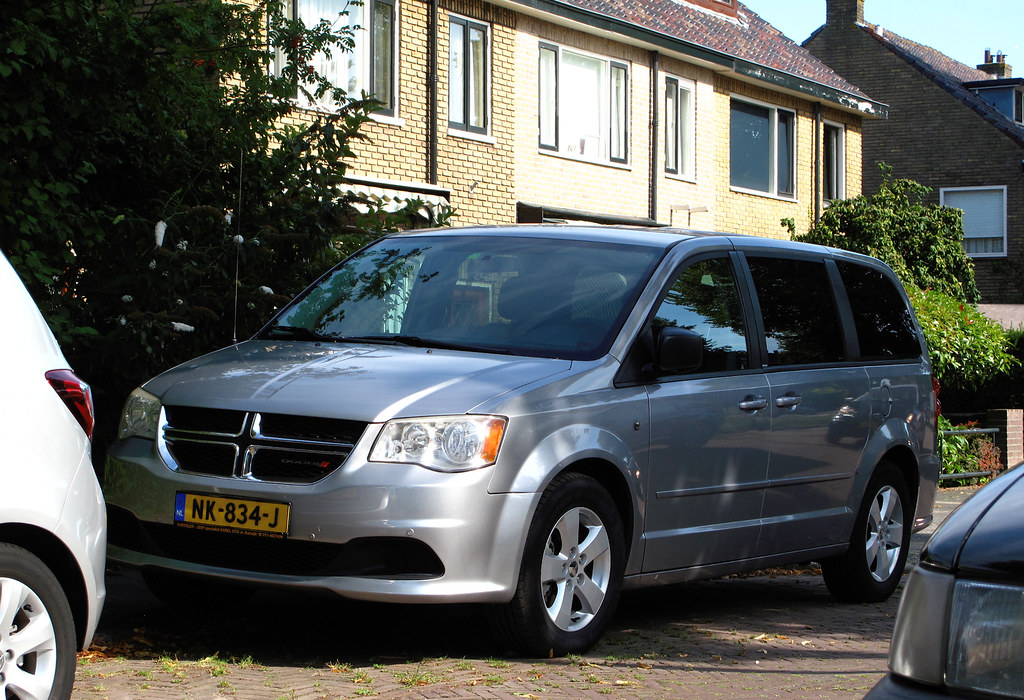
5. **Dodge Grand Caravan**For many families across America, the Dodge Grand Caravan holds a unique place in their collective memory – some of it fond, some of it decidedly not. This minivan has served for decades as the quintessential hauler of kids, pets, and countless pieces of luggage. Yet, despite its venerable status as a family workhorse, the Grand Caravan was, for far too many owners, anything but a smooth or reliable driving experience. Its dependability often fell short of the demands placed upon it, leaving families stranded and frustrated.
It’s incredibly challenging to rely on a vehicle marketed as a do-it-all family, pet, and cargo hauler when one of its most critical components – the transmission – is a common point of failure. Transmission problems were a persistent and infuriating complaint from owners. Before these transmissions would ultimately “go kaput,” they frequently exhibited a range of alarming symptoms, including delayed gear engagement, rough and jarring shifts, and unsettling slipping. These aren’t minor annoyances; they are significant mechanical failures that can quickly escalate into expensive repairs or, worse, leave you stuck on the side of the road with a minivan full of exasperated passengers.
As if the transmission troubles weren’t enough to secure its spot on the “undo” list, many owners also voiced consistent complaints about recurring electrical system problems. These could range from minor annoyances to debilitating malfunctions, adding another layer of unreliability to an already problematic vehicle. Furthermore, heavy oil consumption became another common grievance, forcing owners into a constant cycle of checking and refilling. Given these numerous headaches, it’s no wonder that if many Dodge Grand Caravan owners could rewind time and have a do-over, they would gladly opt for something, anything, else.
Continuing our journey through the automotive hall of shame, this section exposes five more vehicles that consistently disappoint their owners. We’re not just scratching the surface here; we’re diving deep into the recurring themes of problematic transmissions, excessive running costs, and models that, despite initial appeal, spectacularly fail to deliver on their promises. These are the candid insights into why these models often become a source of frustration and regret, making drivers wish they could rewind time and pick a different set of keys. Let’s dig into more automotive decisions that, for many, turned into nightmares on wheels.
Car Model Information: 2024 Toyota Camry SE
Caption: 2011 Dodge Grand Caravan Mainstreet
Name: Dodge Grand Caravan
Manufacturer: Chrysler Corporation,Daimler AG,Chrysler LLC,Chrysler Group LLC,FCA US LLC
Class: Minivan
Layout: FF layout,F4 layout
Production: November 2, 1983 –August 21, 2020
ModelYears: 1984–2020
Related: Plymouth Voyager,Chrysler Town & Country (minivan),Dodge Mini Ram,Chrysler Voyager,Volkswagen Routan
Assembly: Windsor, Ontario,Fenton, Missouri,Fenton, Missouri,Fuzhou
Successor: Dodge Journey,Chrysler Voyager
Categories: All-wheel-drive vehicles, All articles with unsourced statements, Articles with short description, Articles with unsourced statements from December 2017, Articles with unsourced statements from May 2009
Summary: The Dodge Caravan is a series of minivans manufactured by Chrysler from the 1984 through 2020 model years. The Dodge version of the Chrysler minivans, was marketed as both a passenger van and a cargo van (the only version of the model line offered in the latter configuration). For 1987, the model line was joined by the long-wheelbase Dodge Grand Caravan. Produced in five generations across 36 model years, the Dodge Caravan is the second longest-lived Dodge nameplate (exceeded only by the Dodge Charger). Initially marketed as the Dodge counterpart of the Plymouth Voyager, the Caravan was later slotted between the Voyager and the Chrysler Town & Country. Following the demise of Plymouth, the model line became the lowest-price Chrysler minivan, ultimately slotted below the Chrysler Pacifica.
Sold primarily in the United States and Canada, the Dodge Caravan was also marketed in Europe and other international markets under the Chrysler brand (as the Chrysler Voyager or Chrysler Caravan). From 2008 onward, Dodge marketed the model line only as the Grand Caravan; Ram Trucks sold a cargo-only version of the model line as the Ram C/V Tradesman. The model line was also rebranded as the Volkswagen Routan from 2009 through 2014.
After the 2020 model year, the Dodge Grand Caravan was discontinued, ending production on August 21, 2020. For 2021 production, the Grand Caravan nameplate was moved to Chrysler, which used it for a Canadian-market version of the Chrysler Pacifica (in the United States, the exact vehicle was marketed as the Chrysler Voyager).
For its entire production run, the Dodge Caravan/Grand Caravan was manufactured by Chrysler Canada (now Stellantis Canada) at its Windsor Assembly facility (Windsor, Ontario). From 1987 until 2007, the model line was also manufactured by Chrysler at its Saint Louis Assembly facility (Fenton, Missouri). Since their introduction in late 1983, over 14.6 million Chrysler minivans have been sold worldwide (including export versions and versions sold through rebranding).
Get more information about: Dodge Caravan
Buying a high-performing used car >>>
Brand: Dodge Model: Grand Caravan
Price: $23,188 Mileage: 64,336 mi.
Read more about: Buyer’s Remorse on Full Display: 15 Vehicles Motorists Swear They’d ‘Unchoose’ if They Could, According to Driver Confessions
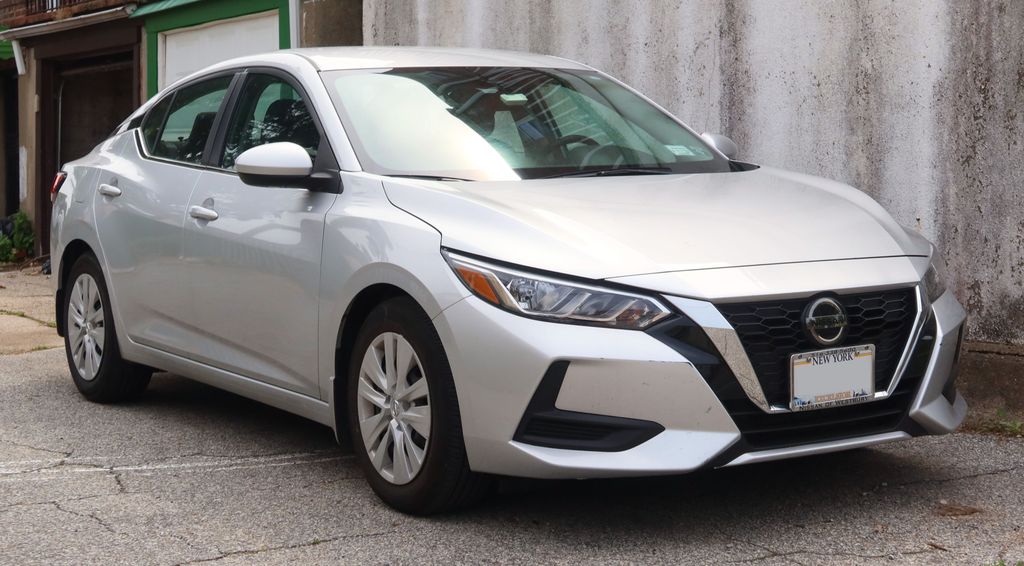
6. **Nissan Sentra**Alright, let’s talk about the Nissan Sentra. This is one of those cars that really exemplifies the phrase “some good, some bad.” And when it’s bad, oh boy, it’s *horrific*. If you’re looking at a Sentra, especially from the 2013 to 2019 model years, you might as well be looking at a ticking time bomb of automotive frustration. These specific years are absolutely notorious for a problem that has become a genuine thorn in the side of countless Nissan owners: the infamous Continuously Variable Transmission, or CVT.
Now, we’ve all heard the debates about CVTs. Some people defend them for efficiency, but honestly, in these Sentra models, they were simply a recipe for disaster. Owners reported a litany of woes, from the transmission overheating – which is a pretty serious issue when it comes to long-term reliability – to jerky acceleration that makes every drive feel like you’re learning to drive stick shift for the first time. Add in unsettling shuddering, and you’ve got a driving experience that’s far from smooth or enjoyable. It’s not just an inconvenience; it’s a fundamental failure of a core component that directly impacts drivability.
But wait, there’s more! Beyond the consistently problematic CVT, the 2013-2019 Sentras also had a laundry list of other issues, including the incredibly unsettling experience of engine stalling. Imagine being on the highway, or trying to make a left turn across traffic, and your engine just decides to quit. That’s not just annoying; it’s genuinely dangerous. And if that wasn’t enough to make you want to “undo” your purchase, there have been numerous recalls related to critical safety components like the vehicle’s airbags, seatbelts, and brakes. This isn’t just a car that occasionally misbehaves; it’s one that seemed to constantly struggle with basic reliability and safety across multiple fronts.
When a vehicle, especially one as mainstream as the Sentra, consistently fails on so many fundamental levels, it’s no wonder that many owners, despite its initial affordability, would jump at the chance to go back in time and choose something else. The promise of a reliable, economical compact car quickly dissolves into a spiral of repairs, safety concerns, and constant anxiety. It’s a stark reminder that a low sticker price often comes with a much higher hidden cost in the form of headaches and disappointment.
Car Model Information: 2023 Nissan Sentra SV
Name: Nissan Sentra
Caption: 2021 Nissan Sentra SR (B18; Canada)
Manufacturer: Nissan
Aka: Nissan Sunny
Production: 1982–present
Class: Subcompact car
Predecessor: Nissan Sunny#B310
Categories: 1990s cars, 2000s cars, 2010s cars, 2020s cars, All Wikipedia articles written in American English
Summary: The Nissan Sentra is a series of automobiles manufactured by the Japanese automaker Nissan since 1982. Since 1999, the Sentra has been categorized as a compact car, while previously it occupied the subcompact class. Until 2006, Sentra was a rebadged export version of the Japanese Nissan Sunny, but since the 2013 model year, Sentra is a rebadged export version of the Sylphy. The Sentra nameplate is not used in Japan. Many other countries in Latin America sell their versions of the Sunny as the Sentra. In Mexico, the first three generations of the Sentra were known as the Nissan Tsuru (Japanese for crane), and the B13 model was sold under that name until 2017, alongside the updated models badged as Sentra.
In North America, the Sentra currently serves as Nissan’s compact car, despite being rated as a mid-size car by the EPA due to its interior volume since the 2007 model year. While previous Sentras were subcompacts, the Sentra has grown over the years, with the Nissan Versa having replaced the Sentra in the entry-level area.
The Sentra name was created for Nissan by Ira Bachrach of NameLab, and Bachrach describes the origin as “Nissan wanted consumers to understand that it was quite safe even though it was small. The word Sentra sounds like central as well as sentry, which evokes images of safety.”
Get more information about: Nissan Sentra
Buying a high-performing used car >>>
Brand: Nissan Model: Sentra
Price: $19,590 Mileage: 40,809 mi.
Read more about: Buyer’s Remorse on Full Display: 15 Vehicles Motorists Swear They’d ‘Unchoose’ if They Could, According to Driver Confessions
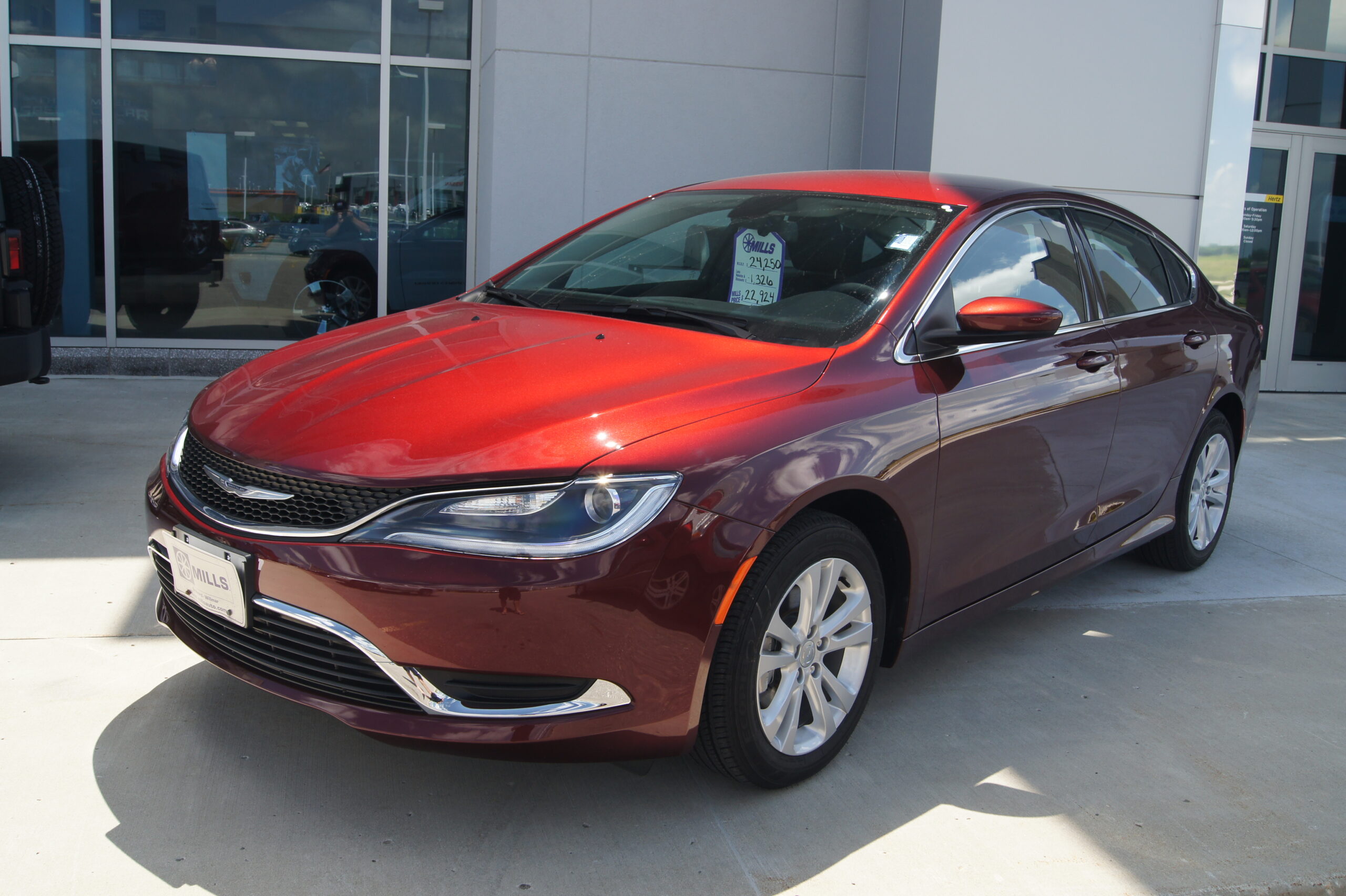
7. **Chrysler 200**Next up on our tour of regrettable automotive decisions is the Chrysler 200. This model, produced between 2011 and 2017, holds a special place in the hearts of many mechanics, mostly because it kept them incredibly busy. For owners, however, it was more often a source of deep frustration. These vehicles were plagued with a whole host of reliability issues that made owning one feel like a gamble where the house always won.
The real star of the show, if you can call it that, for the Chrysler 200’s problems, especially in the 2015, 2016, and 2017 models, was its 9-speed automatic transmission. This wasn’t just “a bit quirky”; owners found it to be “especially problematic.” We’re talking about a transmission that didn’t just misbehave; transmission failure was, quite literally, “a thing.” Imagine the dread of knowing your car’s most complex and expensive component is likely to throw in the towel, leaving you with a hefty repair bill and a serious case of buyer’s remorse.
But alas, the transmission woes were merely the appetizer to a full-course meal of mechanical misery. The Chrysler 200 also suffered from persistent engine performance problems. A car that struggles to perform its primary function – moving reliably and powerfully – is hardly a car at all, is it? These engine issues, combined with the transmission nightmares, painted a picture of a vehicle that was fundamentally flawed, undermining any appeal it might have had from its design or features.
The cumulative effect of these reliability nightmares meant that the Chrysler 200 became a prime candidate for the “undo” button. Drivers weren’t just dealing with minor glitches; they were facing serious, wallet-draining mechanical breakdowns that compromised the safety and functionality of their vehicle. It’s a classic example of a car that looked decent on paper but delivered a consistent dose of disappointment in real-world ownership, making it a clear contender for models drivers wish they had never purchased.
Car Model Information: 2013 Chrysler 200 Touring
Name: Chrysler 200
Manufacturer: Chrysler
Production: 2010–2016
ModelYears: 2011–2017
Assembly: Sterling Heights, Michigan
Class: Mid-size car
Sp: us
Predecessor: Chrysler Sebring
Categories: 2010s cars, All articles with dead external links, All articles with unsourced statements, Articles with dead external links from July 2020, Articles with permanently dead external links
Summary: The Chrysler 200 is a mid-size sedan that was manufactured and marketed by Chrysler from model years 2011 to 2017 across two generations in four-door sedan and two-door convertible (first generation only) body styles.
The 200 nameplate debuted on the 200C, a prototype hybrid vehicle shown at the 2009 North American International Auto Show in Detroit and based on the Chrysler 300. The 200C concept was engineered to accept either traditional gasoline, hybrid or full-electric powertrains.
Get more information about: Chrysler 200
Buying a high-performing used car >>>
Brand: Chrysler Model: 200
Price: $7,788 Mileage: 117,030 mi.
Read more about: Dream Drives: 15 Classic Cars That Should Absolutely Be Revived for Today’s Roads

8. **Nissan Altima**And the hits just keep on coming for Nissan, with another entry that frequently lands on the “wish I never bought it” list: the Nissan Altima. This popular sedan, much like its Sentra sibling, has a problematic history that often stems from one particularly notorious component. If you’re sensing a theme here, you’re not wrong – the CVT, or Continuously Variable Transmission, once again rears its ugly head as a major source of grievance for Altima owners.
Specifically, the model years from 2013 to 2019 were the worst offenders, earning the Altima a reputation for having a truly problematic transmission. Beyond the generalized frustration that accompanies a failing CVT, the Altima added its own unique flavors of disappointment. Owners frequently reported issues with the steering, which is, you know, kind of an important part of driving. A car that doesn’t steer reliably is not just a nuisance; it’s a safety concern that chips away at driver confidence with every turn.
Adding insult to injury, many Altima owners also found themselves battling excessive oil consumption and persistent oil leaks. These aren’t minor inconveniences; they’re tell-tale signs of deeper engine problems that can quickly escalate into expensive repairs if not caught in time. Having to constantly monitor and top off your oil, or worse, dealing with oil stains on your driveway, is definitely not the “hassle-free” ownership experience anyone signs up for when buying a supposedly reliable sedan.
It’s truly a shame, because the Altima often presents itself as a solid, practical choice. But when fundamental systems like the transmission, steering, and engine consistently falter, any initial appeal quickly evaporates. The sheer number of owners grappling with these persistent problems means that if a do-over button existed, countless Altima drivers would gladly mash it, steering clear of the headaches and financial drain that this particular Nissan often brings.
Car Model Information: 2024 Nissan Altima 2.5 SV
Name: Nissan Altima
Caption: 2024 Nissan Altima SR (L34; US)
Manufacturer: Nissan
Aka: Nissan Bluebird
Production: 1992–present
Class: Compact car
Predecessor: Nissan Bluebird,Nissan Stanza
ModelYears: 1993–present
Categories: 2000s cars, 2010s cars, 2020s cars, All-wheel-drive vehicles, All Wikipedia articles written in American English
Summary: The Nissan Altima is a mid-size car manufactured by Nissan since 1992. It is a continuation of the Nissan Bluebird line, which began in 1955.
The Altima has historically been larger, more powerful, and more luxurious than the Nissan Sentra but less so than the Nissan Maxima. The first through fourth-generation cars were manufactured exclusively in the United States and officially sold in North and South America, along with the Middle East and Australia. For other markets, Nissan sold a related mid-size sedan called the Nissan Teana which was between the Altima and Maxima in terms of size. In 2013, the Teana became a rebadged version of the fifth-generation Altima.
The name “Altima” was originally applied to a top trim line of the Nissan Leopard for the Japanese market in 1986, and then to the Nissan Laurel Altima mid-size car sold in Central America and the Caribbean before 1992. In 1992, Nissan discontinued the Stanza which was a Nissan Bluebird clone, replacing it with the US-built Altima, while remaining a compact car. The first Altima was produced in June 1992, as a 1993 model. All Altima models for the North American market were built in Smyrna, Tennessee, until June 2004, when Nissan’s Canton, Mississippi plant also began producing the model to meet high demand.
Get more information about: Nissan Altima
Buying a high-performing used car >>>
Brand: Nissan Model: Altima
Price: $19,890 Mileage: 56,505 mi.
Read more about: Buyer’s Remorse on Full Display: 15 Vehicles Motorists Swear They’d ‘Unchoose’ if They Could, According to Driver Confessions
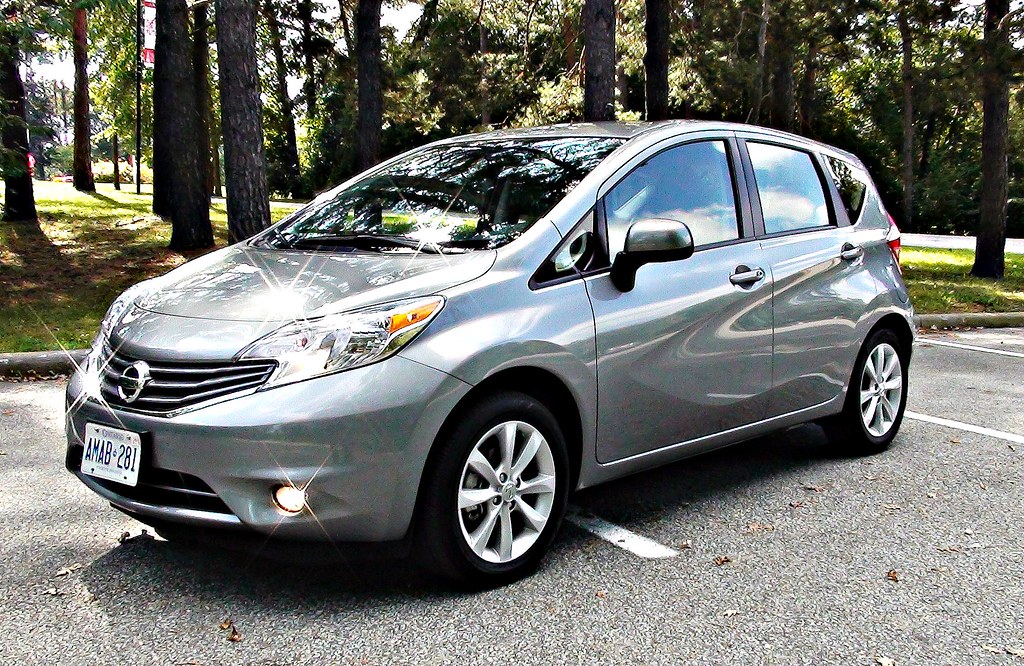
9. **Nissan Versa Note**Alright, let’s shift gears to another Nissan that makes our “undo” list: the Versa Note. On the surface, it had a compelling proposition – a super-cheap small hatchback. And in an automotive landscape where every dollar counts, that low price point undoubtedly reeled in a lot of buyers. However, and this is a big however, that low price tag often mirrored the quality level, making it a classic case of “you get what you pay for” – and sometimes, even less than that.
The primary culprit for frustrating Nissan Versa Note owners to no end? You guessed it: the transmission. Yet again, the dreaded CVT. It seems Nissan really leaned into this technology in a way that, for several of their models across specific eras, just didn’t pan out for long-term reliability or owner satisfaction. For Versa Note drivers, the CVT issues were a constant source of exasperation, undermining the entire driving experience and adding a layer of unpredictable performance to an already modest vehicle.
But the transmission wasn’t the only aspect of the Versa Note that left owners wanting. The car was also saddled with “anemic acceleration” courtesy of its 1.6-liter 4-cylinder engine. This isn’t just a minor complaint for those who crave speed; for a daily driver, especially one navigating city traffic or merging onto a busy highway, a lack of adequate power can be genuinely frustrating and even somewhat unsafe. The combination of a temperamental transmission and a powerplant that felt perpetually out of breath made the Versa Note a car that struggled to simply keep up.
So, while the Nissan Versa Note might have seemed like a bargain initially, its consistent mechanical shortcomings, particularly with that frustrating CVT and underwhelming engine, ensured it became a prime candidate for buyer’s remorse. For many, the initial savings were quickly overshadowed by the ongoing annoyance and cost of dealing with a vehicle that constantly underperformed and ultimately, disappointed. It’s a stark lesson that sometimes, a rock-bottom price comes with hidden strings attached, in the form of reliability issues that make you wish you’d just spent a little more upfront.
Car Model Information: 2024 Toyota Camry SE
Name: Nissan Note
Manufacturer: Nissan
Production: 2004–present
Class: Mini MPV
BodyStyle: hatchback
Layout: Front-engine, front-wheel-drive layout,Front-engine, four-wheel-drive layout
Predecessor: Nissan Almera Tino
Aka: Nissan Versa
Caption: Nissan Note (E13)
Categories: 2010s cars, 2020s cars, All-wheel-drive vehicles, All Wikipedia articles written in British English, All articles containing potentially dated statements
Summary: The Nissan Note (Japanese: 日産・ノート, Hepburn: Nissan Nōto) is a supermini/subcompact hatchback or a mini MPV manufactured and marketed globally by Nissan. Introduced in 2004, the first-generation Note was primarily marketed in Japan and Europe, and was produced in Japan and the United Kingdom. The second-generation model was sold in other regions, including North America where it was manufactured in Mexico and marketed as the Versa Note, and Thailand, where it serves as one of the B-segment hatchback offered by the brand alongside the smaller March/Micra under the Eco Car tax scheme.
In 2017, the second-generation Note was replaced by the French-built K14 Micra for the European market. The Versa Note was discontinued in North America in 2019 due to the decreasing demand for subcompact hatchbacks in the region. It continued to be produced and sold in Japan up to the introduction of the third-generation Note in late 2020.
The Note was introduced with a series hybrid drivetrain in late 2016 as the Note e-Power. Due to its popularity and the push of electrification, the third-generation Note is only available with the e-Power drivetrain, with a WLTC fuel economy of 29.5 kilometres per litre (69 mpg‑US).
Get more information about: Nissan Note
Buying a high-performing used car >>>
Brand: Nissan Model: Versa Note
Price: $23,188 Mileage: 64,336 mi.
Read more about: Your Definitive Guide to the Safest Family Vehicles of 2025: Top Models Earning Highest Safety Ratings
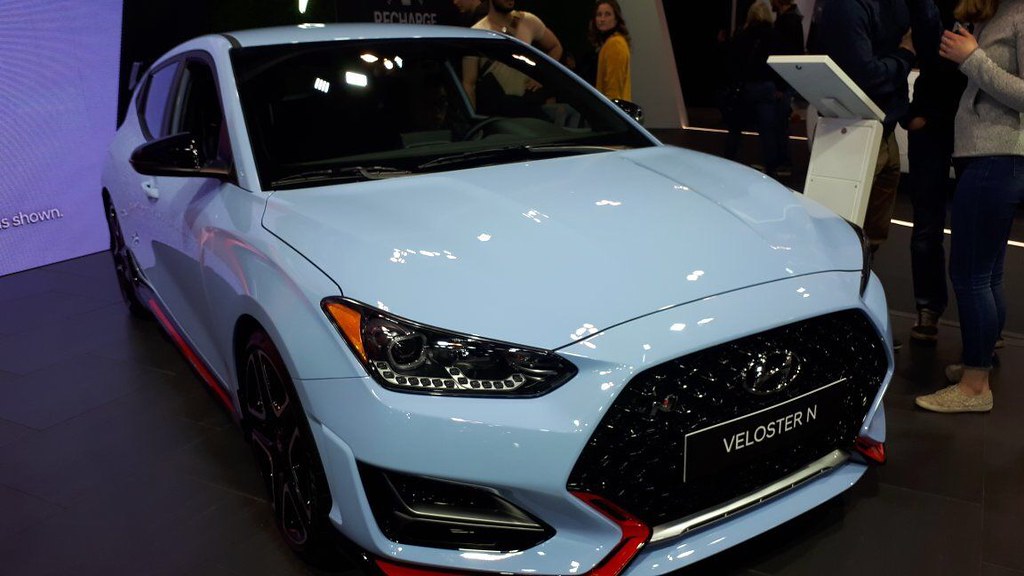
10. **Hyundai Veloster**Last, but certainly not least, on our roster of automotive regrets, we have the Hyundai Veloster. Now, let’s give credit where credit is due: this car had some undeniably cool aesthetics. With its distinctive styling, a unique three-door configuration, and a reputation for responsive handling, it certainly looked the part of a sporty, engaging ride. It turned heads, and for many, its initial appeal was strong. However, as many owners quickly discovered, the problems lurking beneath that stylish exterior were simply “hard to ignore.”
The most alarming issues for the Veloster often centered around its engine. Reports of engine problems that could, disturbingly, lead to “catastrophic failure” are enough to send shivers down any car owner’s spine. This isn’t just about a check engine light; this is about the very heart of the car giving up the ghost, leaving owners with massive repair bills and a deeply unsettling sense of unreliability. A car that looks sporty but can’t reliably perform its most basic function is a recipe for serious regret.
Adding to the mechanical misery, the Veloster’s dual-clutch transmission also proved to be a significant pain point. Drivers frequently complained about issues like delayed acceleration, which can make merging or quick maneuvers a nerve-wracking affair. Slipping gears and jerky shifts further marred the driving experience, transforming what was supposed to be a “responsive” car into one that felt inconsistent and unrefined. These aren’t the characteristics you want in a vehicle that’s trying to sell itself on dynamic performance.
And if engine and transmission troubles weren’t enough, the Hyundai Veloster also had its share of suspension and steering problems. These issues collectively chipped away at any remaining confidence or enjoyment an owner might have had, turning that initial excitement into a prolonged period of frustration. The Veloster, despite its charismatic looks and initial promise, ultimately became another entry in the long list of cars that, due to fundamental mechanical flaws, left owners wishing they could hit that “undo” button and pick a different ride.
Car Model Information: 2013 Hyundai Veloster Base
Name: Hyundai Veloster
Manufacturer: Hyundai Motor Company
Production: 2011–2022
Class: Sport compact car
Layout: Front-engine, front-wheel-drive layout
BodyStyle: hatchback
Predecessor: Hyundai Tiburon
ModelYears: 2012–2022
Assembly: Ulsan
Categories: All Wikipedia articles in need of updating, All articles with unsourced statements, Articles containing Korean-language text, Articles with short description, Articles with unsourced statements from May 2018
Summary: The Hyundai Veloster (Korean: 현대 벨로스터, romanized: Hyeondae Belloseuteo) is a compact car first produced in 2011 by Hyundai, with sales beginning in South Korea on March 10, 2011, and in Canada and the United States since the fall of 2011. In South Korea, it was marketed under Hyundai’s ‘Premium Youth Lab’. It was unveiled on January 10, 2011, at the Detroit Auto Show, and fills the void left when Hyundai discontinued the Hyundai Tiburon after the 2008 model year.
The car differs from most other hatchbacks with its asymmetrical door configuration, featuring one large door on the driver side and two smaller doors on the passenger side. This configuration is more common on commercial vehicles and minivans.
Get more information about: Hyundai Veloster
Buying a high-performing used car >>>
Brand: Hyundai Model: Veloster
Price: $8,999 Mileage: 73,577 mi.
Read more about: Buyer’s Remorse on Full Display: 15 Vehicles Motorists Swear They’d ‘Unchoose’ if They Could, According to Driver Confessions
So there you have it, a candid journey through 10 performance models that, despite their initial allure or practical promises, have consistently left drivers with a profound sense of regret. From the fiery battery woes of electric cars to the incessant transmission failures plaguing everything from sedans to minivans, and the vehicles that simply couldn’t deliver on their premium price tags, these stories serve as powerful warnings. In the high-stakes game of car buying, knowledge truly is power. Learning from the costly mistakes and shared frustrations of others isn’t just smart; it’s essential. So, next time you’re captivated by a shiny new model or a tempting used car deal, remember these tales of woe. Do your homework, look beyond the marketing hype, and prioritize long-term reliability and owner satisfaction over fleeting aesthetics or promises. Your wallet, and your peace of mind, will thank you for making an informed, regret-free choice.



